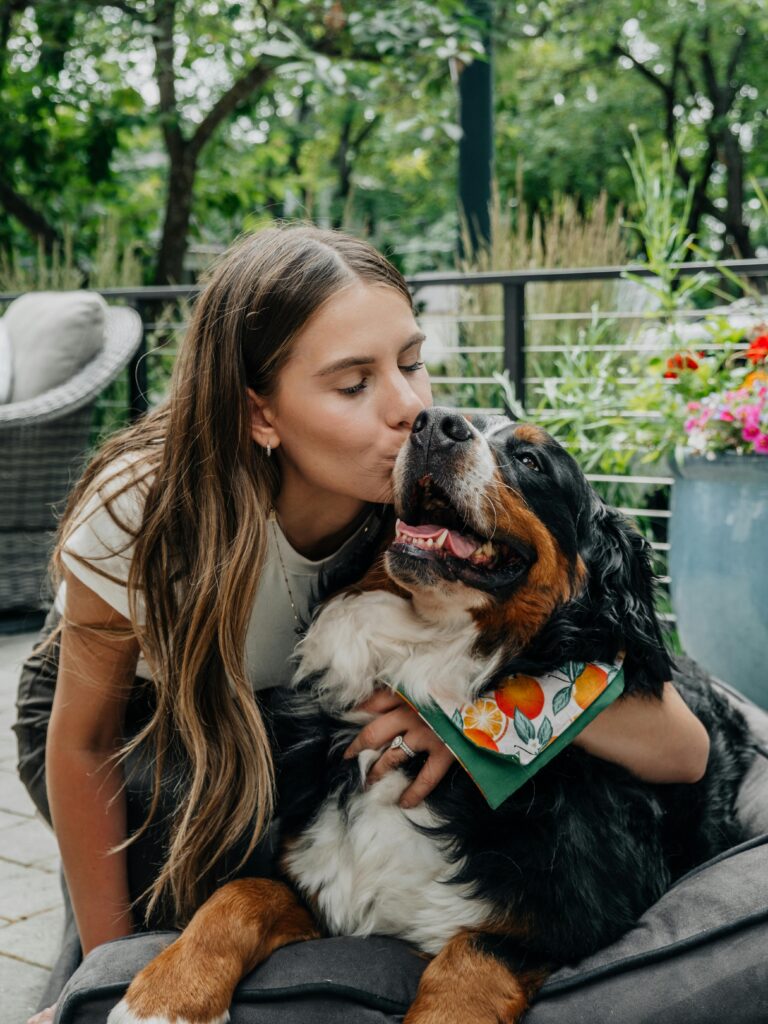Understanding Your Pet’s Needs
Different species, breeds, ages, and activity levels require different diets.
Dogs: These omnivores thrive on a balance of protein, carbohydrates, and fats.
Puppies: Growing pups need more frequent meals (3-4 times a day) with higher protein content and increased calcium and phosphorus for bone development. Look for foods specifically formulated for puppies with an AAFCO statement indicating they meet the needs for growth.
Adult Dogs: Once they reach adulthood, most dogs do well on two meals a day. Active breeds like Border Collies or Huskies require more calories than less active breeds like Bulldogs or Shih Tzus.
Senior Dogs: As dogs age, their metabolism slows down. Senior dog food formulas often contain fewer calories, higher fiber, and added glucosamine and chondroitin for joint support.
Cats: These obligate carnivores need a diet rich in animal protein.
Kittens: Like puppies, kittens need more frequent meals and higher protein and fat content to support their rapid growth.
Adult Cats: Adult cats generally thrive on two meals a day. Wet food is often recommended to help increase their water intake and prevent urinary tract issues.
Senior Cats: Senior cats may experience decreased appetite and digestive issues. Look for foods that are easy to digest and offer smaller, more frequent meals.
Birds: Their dietary needs vary greatly depending on the species.
Seed-eating birds: Budgies, canaries, and finches need a quality seed mix supplemented with fresh fruits, vegetables, and calcium.
Hookbills: Parrots, macaws, and cockatoos require a varied diet that includes pellets, fruits, vegetables, nuts, and occasional healthy grains.
Small Animals: From hamsters and guinea pigs to rabbits and ferrets, each small animal has unique dietary requirements.
Herbivores: Rabbits and guinea pigs need unlimited access to hay to support their digestive systems, along with fresh vegetables and a small amount of pellets.
Omnivores: Hamsters and gerbils need a balanced diet of commercial pellets, seeds, grains, and small amounts of fresh fruits and vegetables.
Carnivores: Ferrets require a diet high in animal protein, with commercial ferret food being the best option.
Decoding Pet Food Labels
The pet food aisle can be overwhelming. Here’s how to decipher those labels:
Ingredient List: Ingredients are listed in descending order by weight.
Look for: Whole meat or meat meal as the first ingredient, followed by recognizable whole foods like fruits, vegetables, and grains.
Avoid: Artificial colors, flavors, and preservatives, by-products, and generic meat sources (e.g., “meat” instead of “chicken”).
Guaranteed Analysis: This section lists the minimum percentages of crude protein, fat, fiber, and moisture. Compare these values across different brands to get an idea of the nutrient content.
Nutritional Adequacy Statement: This statement indicates whether the food meets AAFCO (Association of American Feed Control Officials) standards for a complete and balanced diet. Look for a statement that says “[Product Name] is formulated to meet the nutritional levels established by the AAFCO [Dog/Cat] Food Nutrient Profiles for [life stage].”
Life Stage: Ensure the food is formulated for your pet’s current life stage (e.g., growth, adult maintenance, senior, gestation/lactation).
Types of Pet Food
Dry Food (Kibble): Convenient and cost-effective, kibble comes in various formulas and flavors. It helps with dental health by scraping plaque off teeth.
Wet Food (Canned): Higher in moisture content than kibble, wet food can be more appealing to picky eaters and beneficial for pets who don’t drink enough water.
Raw Food: A growing trend, raw diets consist of uncooked meat, bones, organs, and vegetables. Proponents claim it’s closer to a pet’s natural diet, but it’s crucial to consult your vet before starting a raw diet due to potential risks of bacterial contamination and nutritional imbalances.
Homemade Food: If you choose to cook for your pet, work with a veterinary nutritionist to create balanced recipes that meet their specific needs.
Establishing a Feeding Schedule
Frequency: Puppies and kittens need more frequent meals (3-4 times a day), while adult dogs and cats typically eat twice a day. Smaller, more frequent meals can be beneficial for toy breeds, senior pets, and those with certain medical conditions.
Portion Control: Follow the feeding guidelines on the pet food label as a starting point, but adjust portions based on your pet’s individual needs, activity level, and body condition. Your vet can help you determine the ideal weight for your pet.
Feeding Environment: Provide a quiet and comfortable space for your pet to eat, away from distractions and other pets. Use appropriate bowls and consider elevated feeders for larger breeds or senior pets.
Special Considerations
Food Allergies and Sensitivities: If your pet experiences digestive issues (vomiting, diarrhea), skin problems (itching, hair loss), or ear infections, consult your vet to identify potential food allergies or sensitivities. They may recommend a hypoallergenic diet or an elimination diet trial.
Weight Management: Obesity is a common problem in pets, leading to health issues like diabetes, joint problems, and heart disease. Monitor your pet’s weight and body condition regularly. If your pet is overweight, your vet can help you create a weight loss plan that includes dietary changes and increased exercise.
Treats: While treats can be a valuable training tool and a way to bond with your pet, use them in moderation to avoid weight gain. Choose healthy treats and factor them into your pet’s daily calorie intake.
Dental Health: Dental disease is common in pets. Provide dental chews, feed a dental diet, and schedule regular dental cleanings with your vet.
Hydration is Key
Always ensure your pet has access to fresh, clean water. Change the water frequently and consider using a water fountain to encourage drinking.
Consult Your Veterinarian
Your veterinarian is your best resource for personalized feeding advice. They can help you choose the right food, address specific dietary needs, and monitor your pet’s overall health.
VippetSmart is here to help!
Visit our website for more resources on pet nutrition, including articles, product recommendations, and expert advice. We are committed to helping you make informed decisions to nourish your beloved companion.
Sources and related content


